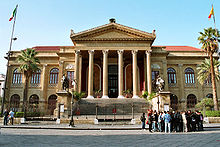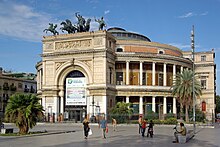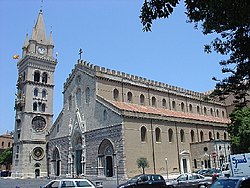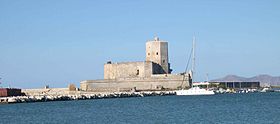
Sicily is the largest and most populous island in the Mediterranean Sea and one of the 20 regions of Italy. It is one of the five Italian autonomous regions and is officially referred to as Regione Siciliana. The island has 4.8 million inhabitants. Its capital city is Palermo. It is named after the Sicels, who inhabited the eastern part of the island during the Iron Age.

Palermo is a city in southern Italy, the capital of both the autonomous region of Sicily and the Metropolitan City of Palermo, the city's surrounding metropolitan province. The city is noted for its history, culture, architecture and gastronomy, playing an important role throughout much of its existence; it is over 2,700 years old. Palermo is in the northwest of the island of Sicily, by the Gulf of Palermo in the Tyrrhenian Sea.
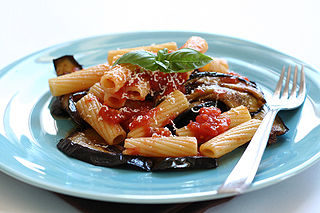
Sicilian cuisine is the style of cooking on the island of Sicily. It shows traces of all cultures that have existed on the island of Sicily over the last two millennia. Although its cuisine has much in common with Italian cuisine, Sicilian food also has Greek, Spanish, French, Jewish, and Arab influences.

Zampogna is a generic term for a number of Italian double chantered bagpipes that can be found as far north as the southern part of the Marche, throughout areas in Abruzzo, Latium, Molise, Basilicata, Campania, Calabria, Apulia and Sicily. The tradition is now mostly associated with Christmas, and the most famous Italian carol, "Tu scendi dalle stelle" is derived from traditional zampogna music. However, there is an ongoing resurgence of the instrument in secular use seen with the increasing number of folk music festivals and folk music ensembles.

The Province of Palermo was a province in the autonomous region of Sicily, a major island in Southern Italy. Its capital was the city of Palermo. On 4 August 2015, it was replaced by the Metropolitan City of Palermo.
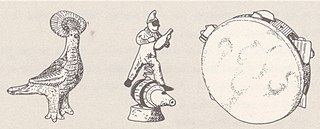
Italian folk music has a deep and complex history. National unification came quite late to the Italian peninsula, so its many hundreds of separate cultures remained un-homogenized until quite recently. Moreover, Italian folk music reflects Italy's geographic position at the south of Europe and in the center of the Mediterranean Sea: Celtic, Slavic, Arabic, Greek, Spanish and Byzantine influences are readily apparent in the musical styles of the Italian regions. Italy's rough geography and the historic dominance of small city states has allowed quite diverse musical styles to coexist in close proximity.
The Music of Abruzzo is a style of music in Abruzzo, Italy. Abruzzo is sparsely populated and is very mountainous, but the area has a musical history involving opera, sacred music, and even the town band. The great composer of delicate, 19th-century airs, Francesco Paolo Tosti, dedicated a series of compositions to the area, the romanze abruzzesi.
San Piero Patti is a comune (municipality) in the Metropolitan City of Messina in the Italian region Sicily, located about 140 kilometres (87 mi) east of Palermo and about 50 kilometres (31 mi) southwest of Messina.
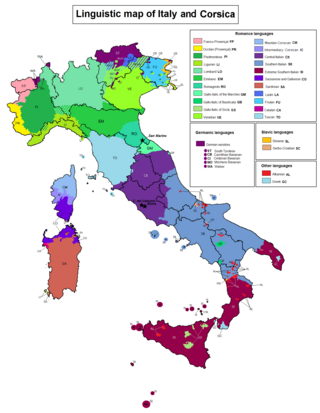
Gallo-Italic of Sicily is a group of Gallo-Italic languages found in about 15 isolated communities of central eastern Sicily. Forming a language island in the otherwise Sicilian language area, it dates back to migrations from northern Italy during the reign of Norman Roger I of Sicily and his successors.
Gianfranco Pappalardo Fiumara is an Italian pianist, specializing in baroque performance.

The Sicilian Regional Assembly is the legislative body of Sicily. While it has a long history as an autonomous entity, the modern Region of Sicily was established by Royal Decree on 15 May 1946, before the Italian Republic. The Regional Assembly has the widest legislative power in Italy and is the only regional assembly to have the title of "parliament" whose members are called "deputies" as are those in Rome. Seventy deputies are elected every five years in the nine provinces.
Domenico Picciché, is an Italian pianist, composer and jurist.

The Opera dei Pupi is a marionette theatrical representation of Frankish romantic poems traditionally performed in Sicily, Italy.

The Metropolitan City of Palermo is a metropolitan city in Sicily, Italy. Its capital is the city of Palermo. It replaced the Province of Palermo and comprises the city of Palermo and other 82 municipalities (comuni).
The following is a timeline of the history of the city of Trapani, Sicily, Italy.

The Interprovincial Commission, also known as "Regione", "commissione regionale" or "cupola regionale") is a governing body of Cosa Nostra. It gathered only to deliberate important decisions about the Cosa Nostra interests between several provinces in the same territory that involved other crime families.
Oriana Civile is an Italian singer, performer, and songwriter. She is a scholar of Sicilian traditional music and an important exponent of reviving the musical repertory of Sicilian oral tradition. Her innate performing talent and her eclectic, versatile personal voice, especially, allow her to handle many music genres: from the blues to jazz, from bossa nova to flamenco, from Argentine tango to comedy rock, from reviving folk music to exploring world music.
Pasta 'ncasciata is a celebratory baked pasta dish originating from Messina, Sicily, but today there are many versions from every province of Sicily as well as Calabria in Southern Italy. Ingredients vary according to the region as well as personal preferences. For example, while the dish usually utilizes two types of cheese, besciamella may be used in lieu of one of the cheeses. It was traditionally baked in a dish placed over, as well as covered by, hot coals. The dish was made more well known by Andrea Camillieri’s Inspector Montalbano.

Sicily'srail network, which has included only standard-gauge lines since 1986, is operated entirely by Rete Ferroviaria Italiana; an exception is the 111-km narrow-gauge Catania-Randazzo-Linguaglossa-Riposto line, which is operated by Ferrovia Circumetnea. As of 2018, the FS network in operation covers a length of 1369 km.
